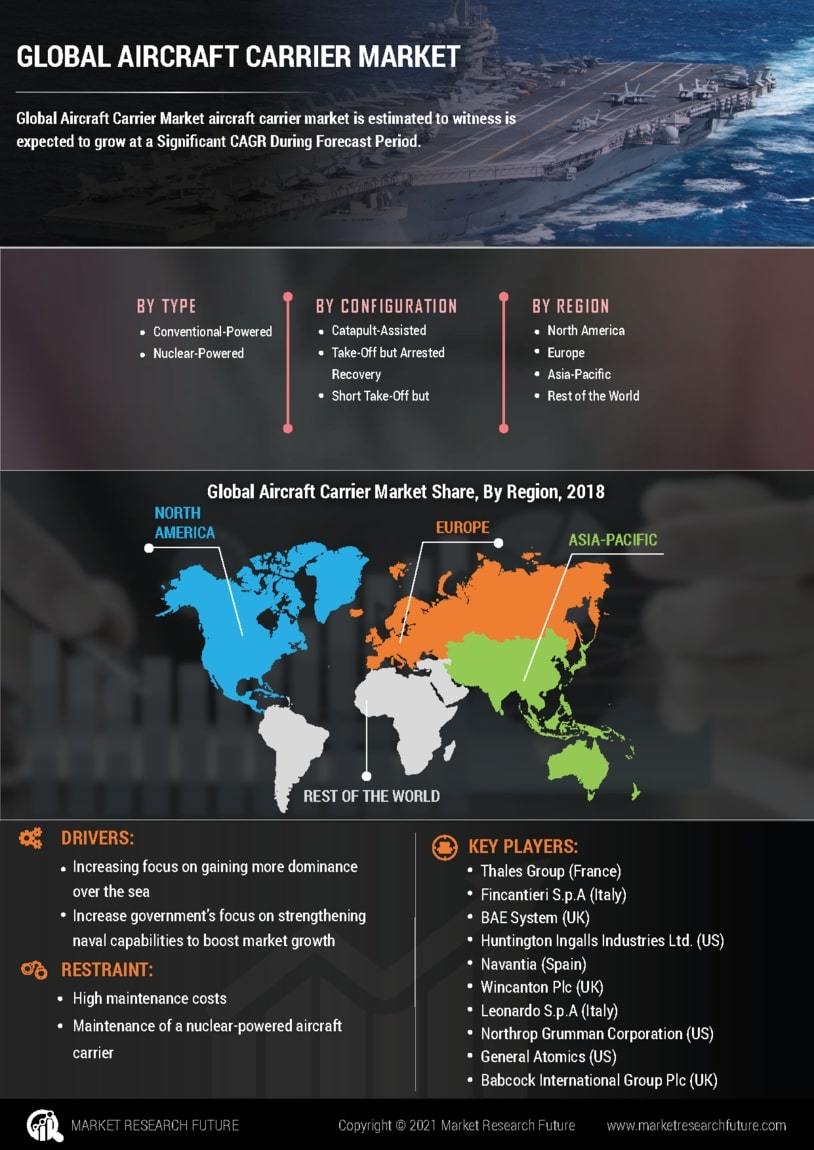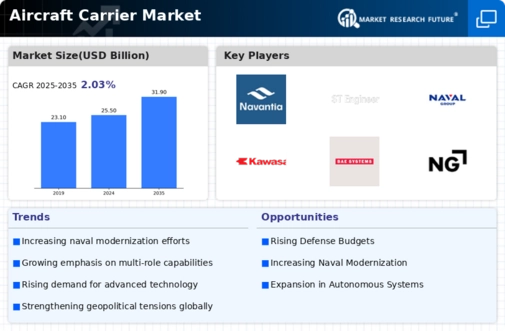Geopolitical Tensions
The Aircraft Carrier Market appears to be significantly influenced by rising geopolitical tensions among nations. As countries seek to assert their military presence, the demand for aircraft carriers is likely to increase. For instance, nations such as China and Russia have been expanding their naval capabilities, which may prompt other countries to enhance their own fleets. This competitive environment could lead to an increase in defense budgets, with a focus on naval power projection. According to recent defense expenditure reports, military spending is projected to rise, potentially benefiting the aircraft carrier segment. The strategic importance of aircraft carriers in power projection and deterrence strategies suggests that they will remain a focal point in national defense planning.
Increased Defense Budgets
The Aircraft Carrier Market is experiencing a notable increase in defense budgets across various nations. Governments are recognizing the strategic importance of naval power, leading to enhanced funding for naval capabilities. For example, recent budget proposals indicate that several countries are allocating significant portions of their defense budgets to naval modernization programs, which include the procurement of new aircraft carriers. This trend suggests a long-term commitment to maintaining and expanding naval fleets. The increase in defense spending is likely to stimulate demand for advanced aircraft carriers, as nations seek to bolster their maritime security and deterrence capabilities. Consequently, the aircraft carrier segment may witness substantial growth in the coming years.
Focus on Maritime Security
The focus on maritime security is becoming increasingly prominent within the Aircraft Carrier Market. As piracy, smuggling, and territorial disputes continue to pose threats, nations are prioritizing the enhancement of their naval capabilities. Aircraft carriers serve as a vital asset in ensuring maritime security, providing a platform for power projection and rapid response to emerging threats. The need for effective maritime domain awareness and the ability to conduct humanitarian missions further underscores the importance of aircraft carriers. As nations invest in their naval forces to address these challenges, the demand for aircraft carriers is likely to grow. This trend indicates a shift towards a more proactive approach to maritime security, potentially driving market expansion.
Technological Advancements
Technological advancements play a crucial role in shaping the Aircraft Carrier Market. Innovations in propulsion systems, radar technology, and weaponry are enhancing the capabilities of modern aircraft carriers. The integration of advanced technologies such as electromagnetic aircraft launch systems (EMALS) and advanced radar systems is likely to improve operational efficiency and combat readiness. Furthermore, the development of stealth technologies may allow carriers to operate in contested environments more effectively. As nations invest in research and development, the aircraft carrier segment is expected to benefit from these advancements. The market could see a shift towards carriers that are not only larger but also more capable, reflecting the evolving nature of naval warfare.
Strategic Partnerships and Alliances
Strategic partnerships and alliances are emerging as a key driver in the Aircraft Carrier Market. Collaborative efforts between nations can lead to shared resources, technology transfer, and joint development programs. For instance, partnerships between countries such as the United States and its allies may facilitate the development of next-generation aircraft carriers. These alliances can also enhance interoperability among allied forces, which is crucial for joint operations. The potential for co-production agreements and shared research initiatives may further stimulate the aircraft carrier market. As nations recognize the benefits of collaboration, the market could see an increase in joint ventures aimed at developing advanced naval platforms.


















Leave a Comment